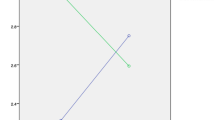Summary
Measurements of resistance to tears carried out in the course of accurately controlled animal trials over varying periods following the surgical closure of skin and fascia wounds, showed that during the first week after the operation the abdominal wall is held together solely by the surgical suture. Two weeks after the operation the firmness provided by the surgical suture is equalled and surpassed by collagen-fibre formation in the wound. The tear-resistance of a car in the supporting abdominal cover corresponds to that of a skin wound after 5 weeks, and after 4–6 months is equal to that of the adjacent normal tissue.
The firmness of the surgical suture itself will depend on the number of individual supportive strands per longitudinal unit of the wound, the thickness of the suture threads and finally and most important, on the amount of tissue held together by the suture. These factors can be registered in form of curves from “in vitro” experiments.
Animal experiments also prove that a tautly-drawn thread can lead to necrosis of the tissue held by it, which weakens the suture, particularly during the second week. With the aid of infra-red photography, stoppage of the blood supply in the region of the scar, due to sutures placed too close together or drawn too tautly, can be shown „in vivo”. Evaluation of the forces that act on the suture, from data on tear-resistance obtained in this way may provide help in recognizing those patients who could require special suturing methods to prevent rupture of their wounds.
Zusammenfassung
Reißfestigkeitsmessungen in exakt kontrollierten Tierversuchen unterschiedlich lange Zeit nach chirurgischer Versorgung von Haut- und Fascienwunden zeigen, daß in der ersten postoperativen Woche die Bauchdecken durch die chirurgische Naht allein zusammengehalten werden. 2 Wochen nach der Operation wird die Festigkeit der chirurgischen Naht durch die Kollagenfaserbildung in der Wunde langsam erreicht und überholt. Die Reißfestigkeit einer Narbe in der tragenden Bauchdecke entspricht nach 5 Wochen, diejenige einer Hautwunde nach 4–6 Monaten der Festigkeit des benachbarten natürlichen Gewebes.
Die Festigkeit der chirurgischen Naht selbst wird wesentlich beeinflußt von der Anzahl der haltenden Einzelfäden pro Längeneinheit der Wunde, ferner von der Dicke des Fadens, der das Gewebe schneidend beansprucht, und schließlich ganz wesentlich von der Menge des mit der Naht gefaßten Gewebes. Diese Faktoren lassen sich durch in vitro-Versuche kurvenmäßig belegen.
Im Tierversuch wird schließlich demonstriert, daß sehr fest angezogene Fäden zur Nekrose des gefaßten Gewebes und damit zur Schwächung der Naht besonders in der 2. Woche der Wundheilung führen. Mit Hilfe der Infrarotphotographie kann die Drosselung der Blutzufuhr im direkten Narbenbereich bei zu eng gelegten oder zu fest angezogenen Fäden in vivo gezeigt werden.
Die Kalkulation der an der Naht angreifenden Kräfte vermag in Korrelation mit den gewonnenen Daten über die Nahtfestigkeit Hinweise für die Erkennung derjenigen Patienten zu geben, die zur Verhütung einer Wundruptur in den Genuß spezieller Nahtmethoden kommen sollten.
Similar content being viewed by others
Author information
Authors and Affiliations
Rights and permissions
About this article
Cite this article
Seidel, W., Tauber, R. 100. Untersuchungen zur Festigkeit der chirurgischen Nähte und der Wundheilung nach Laparotomien. Langenbecks Arch Chiv 329, 245–246 (1971). https://doi.org/10.1007/BF01770517
Published:
Issue Date:
DOI: https://doi.org/10.1007/BF01770517




